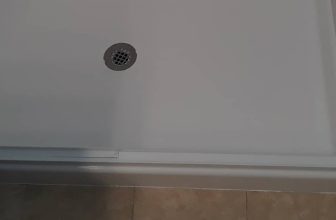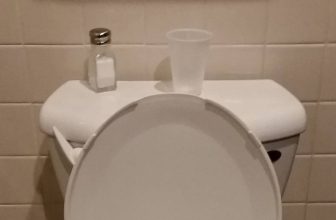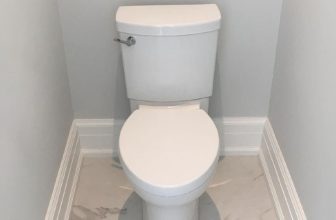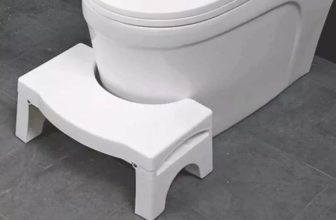Types of Toilet Flush Systems – The Best Options in 2024
When Hercules was sent to clean the Augean stables, he had two rivers at his disposal to do the work. Our daily disposal is no labor of Hercules, but neither are we divine heroes. So while the antic hero used as much brute force as possible to remove the decades’ dung, we need to explore various types of toilet flush systems, using less water with more power.
You might have heard that toilet flushing systems are replaceable to some extent, so you may change them later. Yes, you may, but isn’t it wiser to make the right choice once and for a long? So tanks (no typo) for your attention!
Difference Between Main Types of Toilet Flush Systems
There are many various types of flush systems, and not all of them are equal – at least when it comes to complying with today’s requirements. So, let’s look at all of them.
The mission of the toilet flush is to remove the contents of the bowl with water as you flush it down. It’s more complicated than it seems because the direct gravity-affected flow will do less work than required.
The volume of water is the decisive factor when it comes to clogging, providing the engineers with the difficult task of overcoming it. So there are different toilet flush types that have been developed to make flushing more efficient.
Ballcock Flush System
Though the name is perfect for toilet jokes, it’s one of the most common and popular toilet flush mechanism types. In fact, the ballcock is used to avoid both backflow and overflow. It just takes a rod or a chain to control the valve from outside the tank. Pull it to lift the ballcock, and it will let the water flow and then regulate the level when it fills back.
Invented back in 1790, it’s still widely used in toilets. This system is easy to use, repair, or replace, and it’s the biggest pro. Ballcocks are affordable and compatible with various tanks.
The drawback is that it’s often made of plastic and rubber of inferior quality, so replacing this system will happen more often than you’d like. In addition, it can fail if the tank is underfilled. So we’d recommend it mostly if you feel confident to do minor repairing yourself.
Flapper-Flush Valve
This system is similar to the ballcock, though it uses a flapper at the bottom of the tank as the controlling element. When you use the lever, the air-filled flapper lifts, letting the water out. After the flush, it has no water to float in and has to sit back in its place, letting the tank refill.
This system is praised for its dual-flush support, which makes your toilet even more water-saving. Yet it also can fail sooner than one expects and also depends on sufficient water supply.
It’s also great if you are competent and confident and would rather do the basic work yourself than call a plumber (if you are a plumber yourself, you probably can handle more sophisticated systems as well).
Siphon Flush
A flush siphon is very common in American toilets. It’s easy to install and replace, it works well with filled and underfilled tanks, and it’s quite water-saving. When you use it, it drops the water very fast, so it takes some time for it to go down and do its job.
The flaw is often criticized as clogs. It’s not the amount of water that matters more, but the system. So you better keep the plunger in your bathroom in case you need it.
Pressure-Assisted Flush
It looks like you have something to cover in your tank (you’re not expecting Michael Corleone’s visit, are you?). Pressure-assisted flush system (available since 1984) make the most use of the water pressure that’s constantly present in your tank to make the flush more efficient.
Again, they can work with various volumes of water, from the standard 1.6 down to one GPF. Pressure-assisted flush systems can be bought separately and installed in a supporting tank.
The most noticeable issue with them is their loud sound. Another one is that it’s harder to fix, even if you have an engineer’s hands. In addition, it’s not compatible with regular, gravity-fed tanks. You will have to buy a toilet that supports PAF from the beginning, though later you’ll be able to upgrade it under certain circumstances.
Gravity-Assisted Flush
Well, all flush types that are not pressure-assisted are gravity-assisted, you may note, and you will be right. But there are special gravity-assisted flush systems that make the most use of bowl configurations and the shape and size of valves.
So the efficiency of gravity-assisted flush systems may differ, and you better rely on reviews of particular models.
Double Cyclone Flush
It’s a rather fresh invention that was summoned by water-saving trends. The engineers of TOTO did their best to maximize the effect and minimize the volume of the water at the same time.
The result is an intricate system, including two nozzles and a propulsion system. Only powered by water pressure, the flow is shaped in sophisticated ways. Effectively, it’s a fresher take on gravity-assisted flush systems.
While the mechanism is simple, the system has not been around long enough. So you may experience difficulties in finding spare parts and (if you’re unlucky) a pro ready to fix it if anything goes wrong.
Dual Flush: Flexible Water Saving
Not that it’s a separate technology – rather an option that various flush systems can come with. Effectively, it provides a special button that lets you use just a part of the overall water volume in the tank. It can be a good option with liquid or little solid waste.
Along with the partial flush mechanism itself, a dual flush toilet utilizes other methods of minimizing water consumption. For example, it requires a larger exit hole to minimize the risk of clogging, and the coating should prevent sold waste remains from staying on the surface.
As for controls, there must be either two buttons or instructions on quick release to do the partial flush or special levers to flush partially or fully. This type of toilet is more expensive, just as you might expect, as its mechanism is a bit more sophisticated.
Electric Flush Systems
These are probably the most exotic so far, as good old mechanical systems can do the work as well. They make sense if you want to enjoy all the benefits of a smart toilet – like an automatic flush when sensors detect you are rising, or a heated seat, or whatever.
If you’re all about hi-tech, it makes sense but is mostly aesthetical. Otherwise, there is no reason to look at this geek thing.
Tips on What Flush System Will Fit You the Best
A dual-flush toilet is always a good idea. But various toilet flushing mechanisms have their pros and cons, and their importance is defined by who will be using the toilets and the rooms around as well.
People go first, and choosing the best toilet is the reason to reflect on both your physiology and your habits, to make the most comfortable environment for them at such a sensitive moment. So, power, noise level, and water consumption are the key parameters that define how your toilet flush impacts your life.
FAQ
Here are the most frequent questions on various types of toilet flushes. Of course, there is more detailed info on any of these on specialized sites. But here are the basics you will need to dig deeper.
What are the different types of toilet flushing systems?
If we sort out the systems described above, there are two types – gravity-assisted and pressure-assisted. The former is more common, the latter is a more sophisticated recent invention. There is no need to jump to the newer pressure-assisted toilet, though, if your current one is EPA- or WaterSense-compliant and does the job well.
What is the best toilet flush system?
It depends on your priorities. As different types of toilet flush valves have their pros and cons, you better imagine the way your toilet will be used before actually buying and installing it.
- If you care about saving water, you need a dual-flush WaterSense-compliant model.
- If you want it quiet, choose among toilets with siphon or tornado mechanisms, with double nozzles. And pressure-assisted ones are to avoid. It’s especially important when there are persons with dementia in your family.
- If your primary concern is clogging, look first at pressure-assisted flush systems, despite the noise they make. And if you want it extra powerful, you better look down at Class 5 and its analogs.
What is a Class 5 flushing system?
Class 5 is a proprietary flush technology by Kohler, allowing to avoid clogging even if the toilet is meant to handle extraordinarily large masses of solid waste. The efficiency is achieved through a larger flush valve and direct jet fed.
As a result, a mass of water is let out in moments, flushing larger masses on its way. One of the tricks used for that involves making the entry of the flushing system is 1.5 times larger than the exit, thus forming extra pressure.
Let’s remember that cleaning the Augean stables with the power of two rivers was exactly the fifth labor of Hercules, though it’s merely a coincidence with the 5 in the name. Class 5 is a proprietary system, so it can only be found in Kohler toilets. American Standard, though, has something similar, named Double Vortex.
Also read:
- How to Adjust Water Level in Toilet Bowl
- Toilet Gurgling: Main Causes and Tips to Fix Them
- Dual Flush vs Single Flush Toilets
- How to Fix a Kohler Toilet That Keeps Running
- How to Fix a Wobbly Toilet
Pee-ceful Coexistence
If various flush systems coexist, all of them have their pros. No matter if your primary concern is noise, clogging, water-saving, or dual-flush – you can have any of these (though not simultaneously). Considering this, you must predict how the toilet will be used – how often, by whom, and with which drainpipe system. All these considerations can lead you to the correct choice.
If you have been brooding over it in a quiet place to the peaceful sound of water flowing and finally found it useful, you can share it with your friends on Facebook, Twitter, or whatever (except Clubhouse, you know). And if you have something to add, you can do it down here in the comments.








